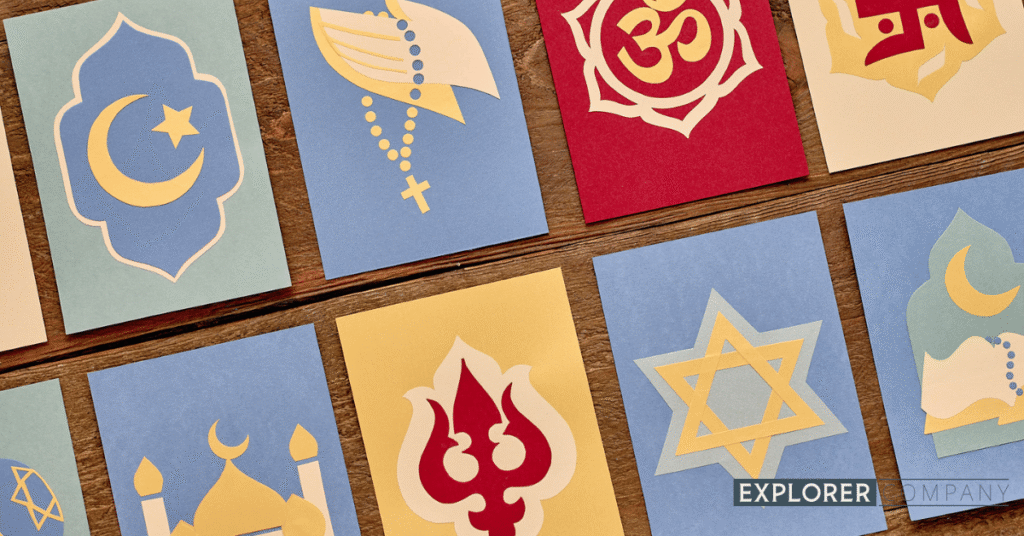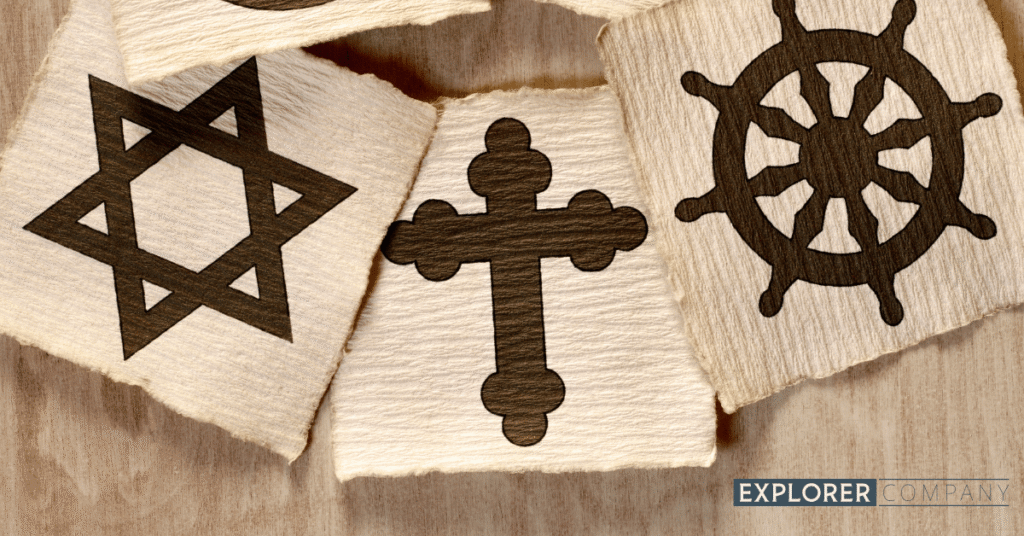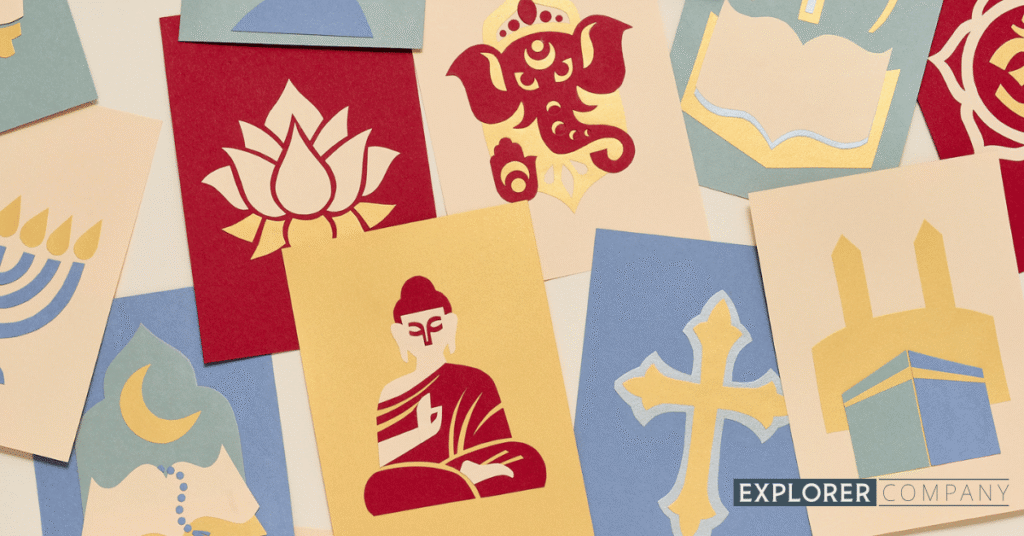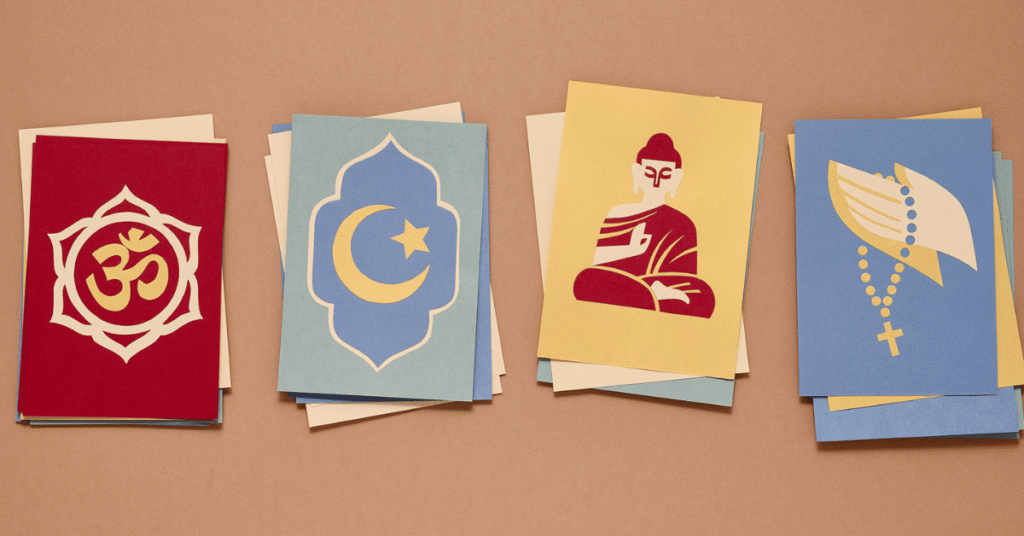Across the wide grasslands of Mongolia, where the horizon meets an endless sky, lies a belief system older than kingdoms and dynasties. Known as Tengrism, this ancient faith shaped the lives of nomads, guided rulers, and influenced how Mongolians saw their place in the universe.
Rather than temples or scriptures, Tengrism finds its expression in the land itself in the sun and moon above, the mountains that touch the clouds, the sacred fire in the home, and the horses that gallop across the steppe.
These symbols are more than relics of the past. They continue to inspire rituals, festivals, and national identity, offering travelers a unique way to connect with Mongolia’s heritage. Exploring Tengrism is not just about history; it’s about understanding the spirit of a land where nature and belief remain inseparable.
Tengrism: Mongolia’s Ancient Faith
Tengrism originated thousands of years ago among nomadic tribes of Central Asia. It was never formalized with written scriptures but was instead passed down through oral tradition, rituals, and daily practices. At its center is the Eternal Blue Sky, known as Mönkh Khökh Tengri, worshipped as the supreme power.
The belief system emphasizes balance between people and nature. Animals, rivers, mountains, and fire are not just resources but sacred presences that deserve respect. Ancestors are also honored as protectors of families and clans. This worldview guided Mongols through their migrations, wars, and everyday lives, shaping their resilience in one of the world’s harshest environments.
Key Symbols of Tengrism and Their Meanings
To understand Tengrism, it is essential to look closely at its symbols. Each carries deep meaning and reveals how Mongolians view their world.
1. The Eternal Blue Sky (Mönkh Khökh Tengri)
The sky is the highest power in Tengrism. It symbolizes infinity, justice, and the divine order that governs life. Mongolian rulers, including Genghis Khan, claimed their right to lead under the will of the Eternal Blue Sky. Today, this symbol still resonates in ceremonies and in the national consciousness.

2. The Sun and Moon
Both are seen as guardians of balance and continuity. Their images appear on Mongolian state emblems and even in the decoration of traditional yurts. The sun stands for warmth and life, while the moon reflects calmness and the eternal passage of time.
3. Fire (Sacred Flame)
Every Mongolian home treats the hearth as sacred. Fire represents purity, life, and protection. In traditional households, the fire is never carelessly handled, and offerings of milk or butter may be placed into it during rituals.
4. The Horse
More than a practical companion, the horse is a spiritual symbol. It is believed to connect humans with the spirit world and represents freedom across the steppe. Songs, poetry, and festivals across Mongolia celebrate the horse as both a sacred and cultural treasure.
5. Mountains, Rivers, and Sacred Sites
Natural landscapes hold spiritual power in Tengrism. Mountains are often regarded as the homes of protective spirits, while rivers are symbols of purity and continuity. Travelers often stop at ovoos stone cairns on mountain passes to make offerings of stones, scarves, or food for safe journeys.
Tengrism in Everyday Life and Rituals
Tengrism is not confined to history books. Its symbols and rituals continue to shape Mongolian life today.
- Shamanic practices: Shamans act as bridges between the human and spirit worlds. Through drumming, chanting, and rituals, they seek healing, guidance, and blessings for communities.
- Ovoo offerings: Families gather at sacred cairns to honor spirits, circle the structure three times, and offer food or blue silk scarves known as khadag.
- Festivals tied to seasons: Celebrations mark the cycles of nature, such as spring renewal or harvest thanksgiving, reflecting gratitude toward the land and sky.
- Household traditions: Fire is carefully tended, dairy products are offered to guests, and livestock is blessed before long migrations.
These customs demonstrate how spirituality is interwoven into daily life, creating a living connection between people, ancestors, and the natural world.

Tengrism’s Influence on Modern Mongolia
Despite centuries of Buddhist influence, Tengrism remains an important part of Mongolian identity. It has merged with Buddhism and shamanism, creating a unique cultural blend.
- National emblems: The Soyombo, Mongolia’s national symbol, includes images of the sun, moon, and fire all connected to Tengrism.
- Historical significance: The idea of a divine mandate from the Eternal Blue Sky legitimized the rule of Genghis Khan and his descendants.
- Cultural revival: In recent years, younger generations have shown renewed interest in Tengrism as a way to reconnect with their roots and strengthen national pride.
The resilience of these beliefs highlights how deeply they are tied to the Mongolian landscape and identity.
Experiencing Tengrism on a Mongolia Tour
Travelers can experience Tengrism not as an abstract concept but as a living tradition across Mongolia. The country’s sacred landscapes, rituals, and festivals offer countless opportunities for meaningful encounters.
1. Sacred Ovoos
Stone cairns are found on nearly every mountain pass. Travelers can take part in the ritual of circling an ovoo three times, adding stones or offerings, and receiving blessings for a safe journey.
2. Shamanic Ceremonies
In certain regions, visitors may meet shamans who perform traditional rituals. These often involve drumming, chanting, and symbolic offerings to spirits.
3. Holy Mountains and Lakes
Mount Burkhan Khaldun is regarded as the sacred resting place of Genghis Khan. Khuvsgul Lake, called the Blue Pearl of Mongolia, is believed to hold spiritual energy and purity.
4. Horse Culture
Festivals like Naadam showcase horse racing as both a sport and a spiritual celebration. Riding across the open steppe allows travelers to feel the same sense of freedom that nomads have honored for centuries.
Explorer Company: Your Gateway to Mongolia’s Spiritual Heritage
Exploring Tengrism is best experienced through journeys that connect travelers to the land and traditions of Mongolia. Explorer Company offers specialized tours that make these encounters possible:
- Private Mongolia Tours: Guided visits to sacred sites where local experts share the stories of Tengrism.
- Self Drive Mongolia Tours: Travel at your own pace with carefully designed routes that pass through sacred mountains, rivers, and ovoos.
- Tailor-Made Expeditions: Combine cultural immersion with natural wonders like the Gobi Desert, the Altai Mountains, and Khuvsgul Lake.
Every tour is supported by reliable 4×4 vehicles, local knowledge, and routes that bring Mongolia’s spiritual heritage to life. With Explorer Company, you can connect to the symbols of Tengrism in ways that are both authentic and unforgettable.

Conclusion
Tengrism remains one of the most important threads in Mongolia’s cultural fabric. From the Eternal Blue Sky to the sacred horse and the holy fire in every home, its symbols reflect a worldview that values balance, respect, and unity with nature.
For travelers, understanding these symbols offers more than historical insight. It opens a path to connect with the living traditions of Mongolia, whether at a sacred ovoo on a mountain pass, during a shamanic ceremony, or while riding a horse across the endless steppe.
With Explorer Company as your guide, exploring the symbols of Tengrism becomes not only a journey into the past but also an experience of Mongolia’s present spirit.
